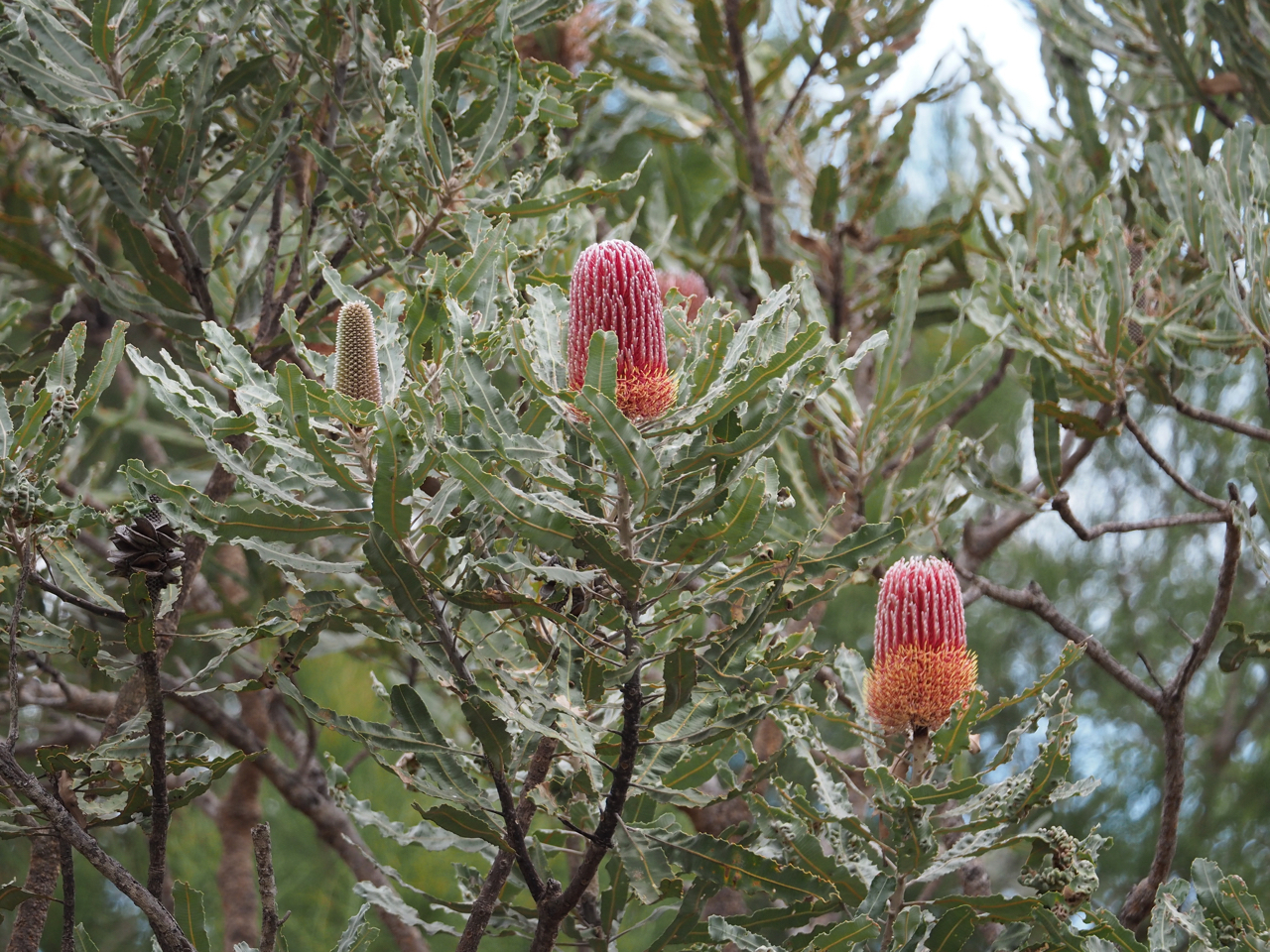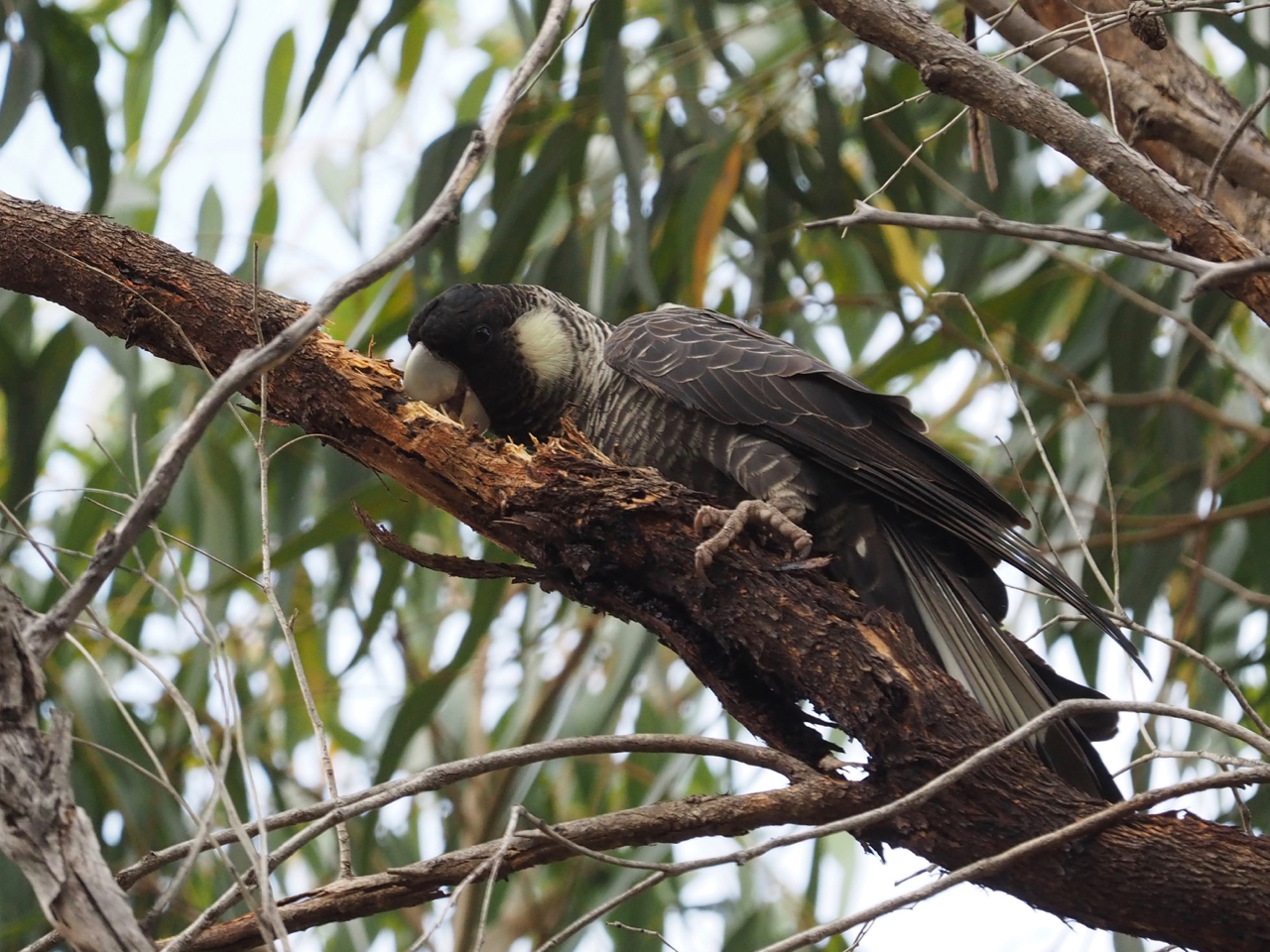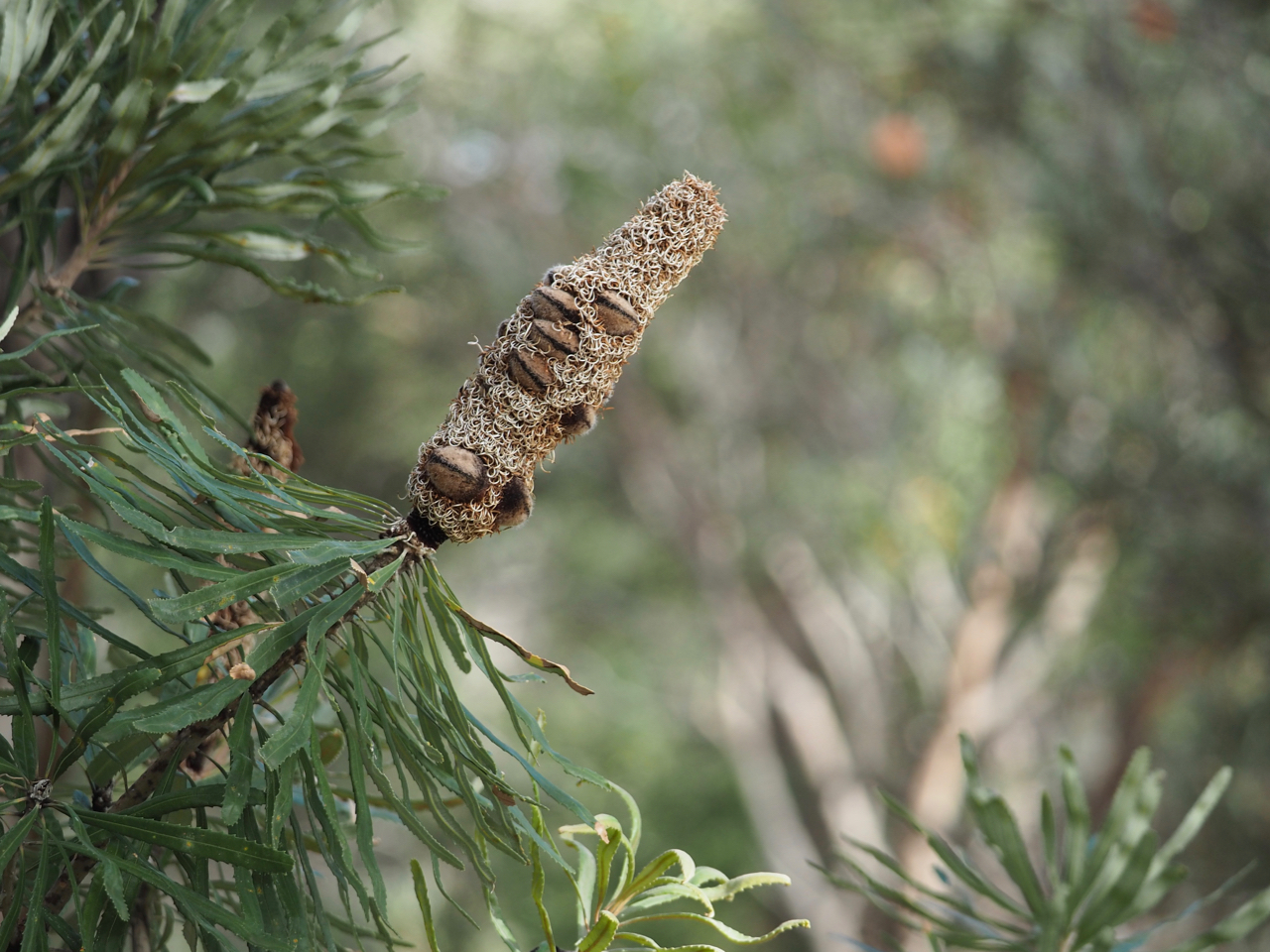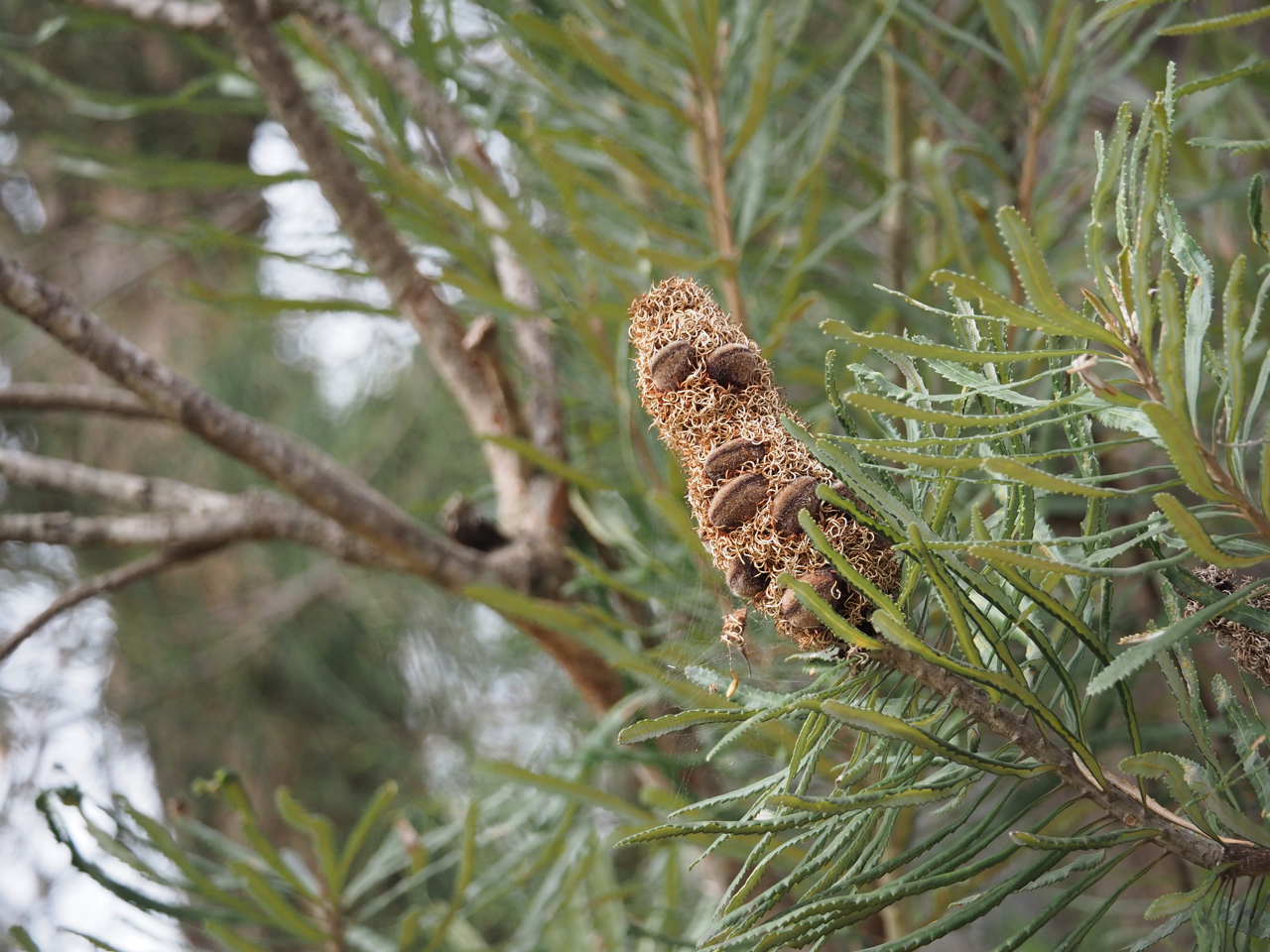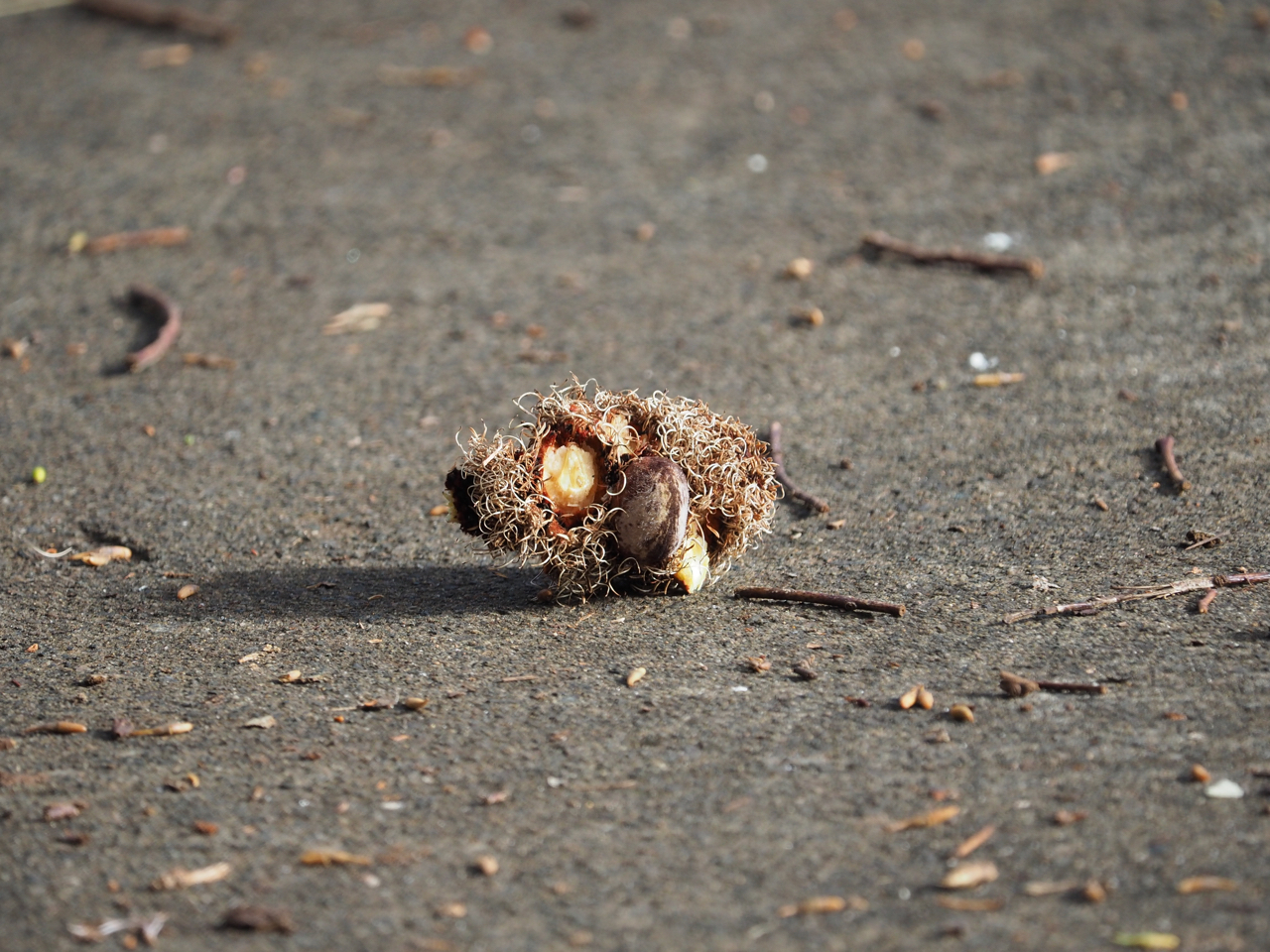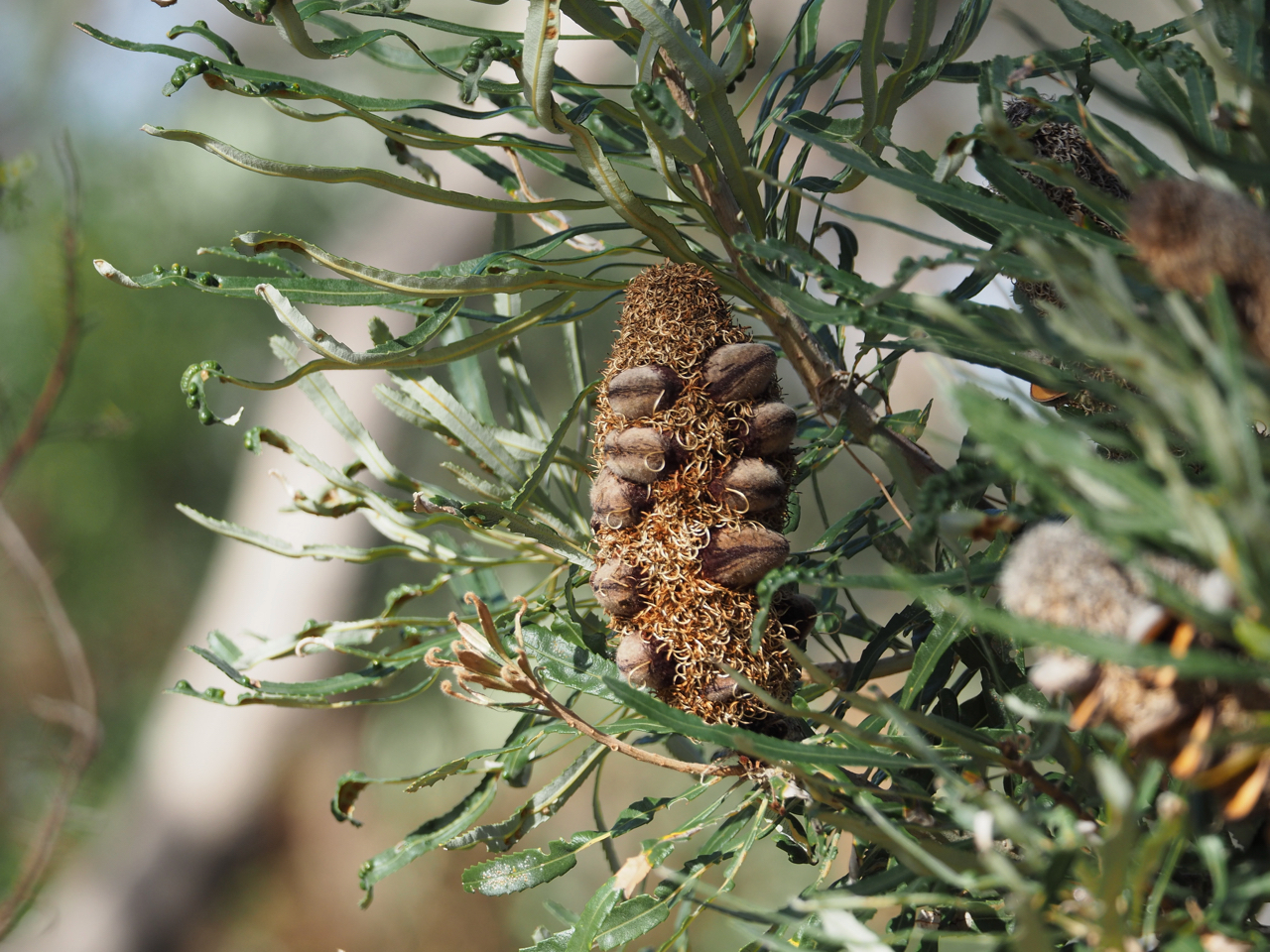Winter has finally arrived in Perth bringing some much needed rain. If you’re lucky, during the breaks in the rain you might hear the distinctive wee-loo call of the Critically Endangered Carnaby's Black-cockatoo, as large numbers are still here in Perth on the Swan Coastal Plain. Carnaby's Black-cockatoos are seasonal visitors to Perth, as they move between the Swan Coastal Plain in the non-breeding season and the Wheatbelt in the breeding season. Carnaby’s have been coming to the Swan Coastal Plain forever, long before European colonisation and the development of Perth. They face a lot of challenges as the area becomes more and more urbanised, but they’re persisting. For now.
Recently there has been a large flock of Carnaby's that fly over my house at dawn, moving into Kings Park where they feed in the remnant bushland.
One Sunday afternoon a couple of weeks ago after several days of rain there was a break in the weather, so I grabbed my camera and set off to find the cockatoos. My entrance to Kings Park is off Thomas St, a busy 6 lane road that can be quite noisy. Once you get a short way into the bushland the traffic noise dies down and you can hear the sounds of the bush. The breeze rustling through the canopy, chattering birdsong, and the ever-present chukka chukka of the Willy Wagtail.
Just one of the views of Kings Park bushland…
Locating foraging Black-cockatoos can be quite tricky, as they blend into the foliage. The best way to find them is to listen for their calls and look for foraging residue (discarded fruits and fruit pieces) on the ground. Fortunately Carnaby's can be quite noisy, especially in large groups, so I used my ears to track them down.
After a few minutes I heard some calls in the distance, and sticking to the marked trails made my way towards them. When walking in local bushlands and National Parks it's important to stay on the marked tracks and trails. Traipsing through bushland can damage the vegetation, disturb wildlife, and spread weeds. All things we want to avoid! In this case the path was not the most direct route to where I heard the cockatoos and I ended up looping back, but it's all part of the journey. Plus I got to see some Banksia prionotes and Banksia menziesii in all their spectacuar glory!
Acorn Banksia (Banksia prionotes)
Firewood Banksia (Banksia menziesii)
I found the flock feeding in Banksia and Marri along one of the main roads in Kings Park. A solo male caught my eye, acting as sentry at the top of a dead stag. As I watched, his mate appeared out of a hollow several metres below him! She spent a few minutes inspecting the hollow inside and out, before the pair flew off to join the rest of the flock. I wonder if they will decide to breed in Kings Park next season?
A pair of Carnaby’s Black-cockatoos investigating a nest hollow in a dead stag.
A male Carnaby’s Black-cockatoo standing sentry at the top of a dead stag.
A female Carnaby’s Black-cockatoo chewing the rim of a potential nesting hollow.
My next stop was the rest of the flock feeding in the banksia and marri. The banksia feeders were foraging quite low, only about 3m off the ground, which would have made for some amazing photos! Unfortunately, in classic Erika style, I missed the opportunity because I was too busy talking to some strangers about the cockatoos. Ah well!
It started to drizzle again soon afterwards, but I didn’t want to call it quits on the cockatoos yet. I waited it out under an obliging Marri tree and using my ears again I tracked the flock of Carnaby’s to the picnic area on Saw Ave. It was amazing to stand there, surrounded by cockatoos wheeling in and out of the trees.
Many of the Carnaby’s were ‘grubbing’, chewing into the branches of trees to find fat, juicy grubs to eat. This is a distinctive, and destructive, behaviour that is characteristic of Carnaby’s, Baudin’s, and Yellow-tailed Black-cockatoos.
A female Carnaby’s Black-cockatoo ‘grubbing’ in a Eucalypt.
Moving on again I managed to find some cockatoos feeding low down in a Banksia. For such large birds they blend into the foliage. Fortunately this female obliged, and paused for a photo.
A female Carnaby’s Black-cockatoo pauses while foraging in a Banksia.
At this point the clouds were looking rather menacing, and I was a good 30 mins walk from home, so I decided to call it a day. I couldn’t help take some photos of the different Banksia flowers and cones (inflorescences and infructescences if you want to be technical) that I passed on my way home, including a partially processed cone that had been discarded by a cockatoo.
I feel so privileged to live close to the wonder that is Kings Park, and also to share my home with the Black-cockatoos. May the Carnaby’s be regular visitors for years to come!


